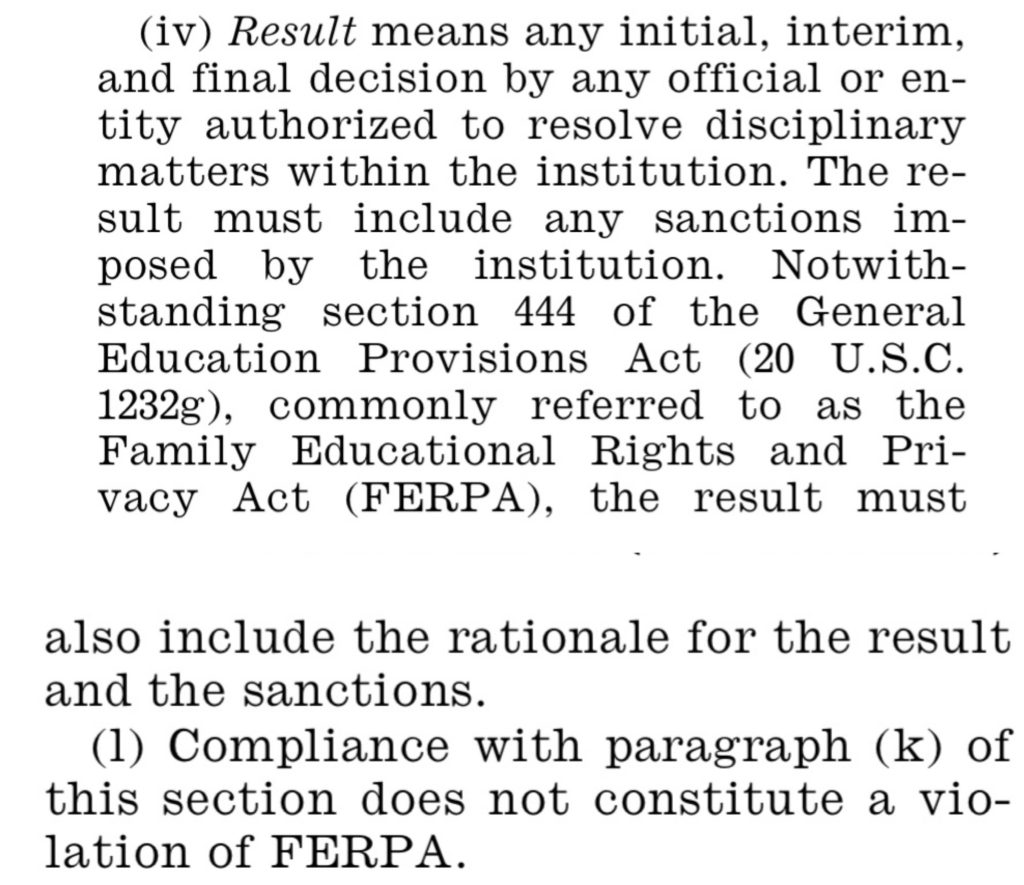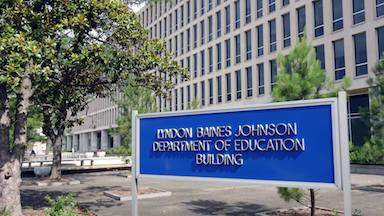One of the most persistent concerns we see raised by both complainants and respondents in campus sexual assault cases is a perceived lack of transparency in the proceedings. These frustrations can lead to protests and even legal challenges. The 2013 VAWA amendments to the Clery Act were designed to address this issue, and we can look to them to help find solutions to this challenge. This post will be the first in an ongoing series on Clery transparency, and will focus on the issue of providing the rationale at all stages of the results in “any institutional disciplinary proceeding that arises from an allegation of dating violence, domestic violence, sexual assault, or stalking”.

Providing the results to both parties is a longstanding requirement of the Clery Act, first enacted as part of the 1992 amendments. The 2013 amendments and especially the 2015 implementing regulations, however, brought significant changes to this rule – notably a requirement that disclosure be made simultaneously in writing without a request, and that “any initial, interim, and final decision…must also include the rationale for the result and the sanctions.”
The rationale must be an integral part of the results at every stage and not separate, or something that must be requested. An identical disclosure must be made to both parties, consistent with Clery’s longstanding requirement that the parties be treated equally.
With the enaction of a new requirement that if one party is allowed to appeal both are, another component of the 2013 amendments, one of the primary reasons for including the “rationale” was “so that if an institution has an appeals process, the accused and the accuser will have a basis for the appeal.” This means that significantly more detail than before is required to be included in the results with Clery expressly superseding any limitations under the federal Family Policy Compliance Act (FERPA).
The U.S. Department of Education (ED), in The Handbook for Campus Safety and Security Reporting, 2016 Edition, provides critical guidance on what must be disclosed:
In explaining the rationale for the result and sanctions, the official or entity must explain how it weighted the evidence and information presented during the proceeding, and explain how the evidence and information support the result and sanctions. You must describe how the institution’s standard of evidence was applied. It is not sufficient to say only that the evidence presented either met or did not meet the institution’s standard of evidence.
This means that the rationale should tie specific evidence, including witness testimony and any corroborating material such as records of electronic communications and video recordings, to the decision reached. An analysis of how that evidence did or didn’t meet the burden of proof is also required. As noted by ED an institution may not simply say that the evidence met or didn’t meet the burden of proof – a “why” must be articulated.

It is also important to note that because the term “result” is universally defined in the Clery regulations, at 34 CFR §668.46 (k)(3)(iv), this information must be included even if a direct appeal isn’t available, because either one isn’t available to either party or it isn’t available at that phase of the process (even at the end of a process it may not truly be final and changes made by exceptional means will be addressed in a subsequent blog post). Helping the parties understand the findings in what is often a complex and confusing process for them is also an invaluable benefit of including this information and ample justification on its own.
This transparency has the joint benefits of helping to ensure that participants fully understand the process, and holding institutions to correctly applying their own policies and standards. Both of these are likely to lead to increased confidence in campus proceedings, and ultimately less controversy as constituent buy-in and trust are increased.
This blog does not provide legal advice and does not create an attorney-client relationship. If you need legal advice, please contact an attorney directly.
